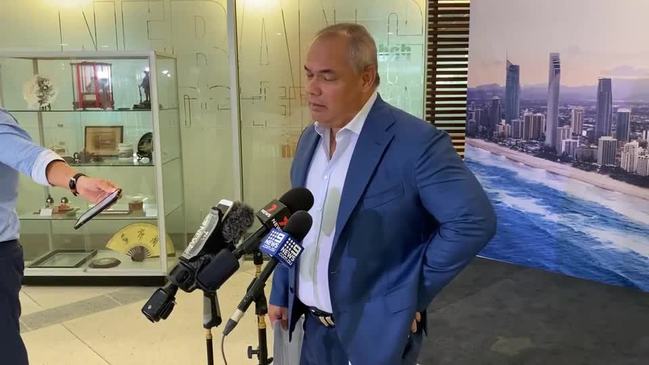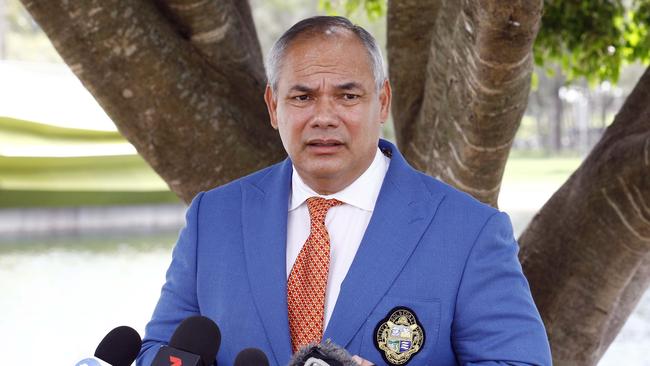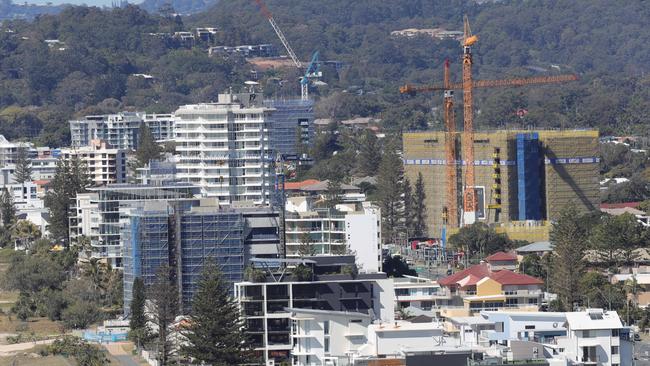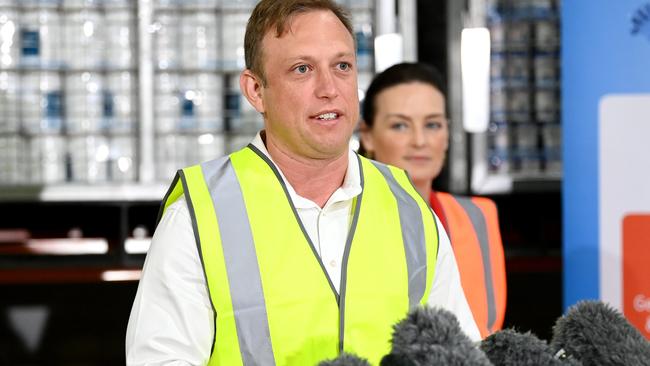Gold Coast development: Cane fields, Kirra, Coolangatta, Palm Beach and Bilinga targeted for housing
A new state government taskforce is to investigate transforming the Gold Coast’s northern cane fields into towns, while four southern suburbs will be targeted for high density development. FULL DETAILS >>>

Gold Coast
Don't miss out on the headlines from Gold Coast. Followed categories will be added to My News.
- Housing breakthrough: Fresh hope for Gold Coast homebuyers
- Towers turning Gold Coast into ‘new Monte Carlo’
- Swamped: Developers stunned by demand in new $1.5b suburb
A NEW state government taskforce is expected to investigate transforming the Gold Coast’s northern cane fields into towns to help ease pressure on crowded established suburbs.
It will run in conjunction with a council strategy to target the southern suburbs of Kirra, Coolangatta, Palm Beach and Bilinga for high-density development.
The state government on Wednesday announced a new Growth Areas Delivery Team would look at undeveloped land between the Sunshine Coast and Tweed Heads to help cater for the southeast’s bulging population.
FULL DIGITAL ACCESS: JUST $1 FOR FIRST 28 DAYS
It will be made up of staff from the Department of State Development and Planning and Economic Development Queensland and will “pursue new partnerships” between developers, local governments and utility providers to “support structure planning, infrastructure planning and infrastructure funding arrangements” for new growth areas.
The taskforce’s eventual findings are expected to take the pressure off already crowded suburbs by potentially opening up new areas for development. Its first report is due by March 31.

Mayor Tom Tate welcomed the taskforce and put forward the cane fields as the last remaining area available for large-scale development.
“We are running out of greenfield space so what have we got left? Going up instead of sprawling out, so we need to look at this to create more affordable product as well as the appropriate community infrastructure,” he said.
He said a sticking point could be the high cost of building and maintaining the everyday infrastructure needed to house tens of thousands of new residents.
Landowners in the Norwell Valley have long wanted to sell their land for redevelopment.
In 2020 they unveiled a proposal for a new mini-city that would home more than 60,000 people.
However, the biggest challenge facing the project would be a green light by all three levels of government.
The first major hurdle would be the rezoning of cane fields. Currently, the area is classed in the Shaping SEQ regional plan as an “investigation area”.
State government data reveals a 200 per cent increase in net migration from cities to regional areas in the 2019-20 financial year.

Deputy Premier Steven Miles said this data meant there was a need for a “fundamental rethink of our approach” to infrastructure planning and delivery.
“We know there is a pipeline of approvals to deliver and partnerships with local government and industry are vital for this delivery,” he said.
“In our COVID-19 recovery phase, we must accelerate the development of under-utilised land in major development areas to create investment, drive economic activity and provide new employment opportunities.”
Property Council of Australia Queensland boss Chris Mountford said the taskforce was critical to install proper planning, with the region now the frontrunner to host the 2032 Olympic Games.
More than five million people are expected to call the state’s southeast home within 20 years. Today, it is 3.5 million. The Gold Coast population is predicted to boom from 600,000 to 1 million.
The city’s population has skyrocketed during the COVID-19 pandemic, with some real estate agents tipping property prices to rise by up to 20 per cent.
The taskforce’s work is expected to mend splits in communities over where to put new residents.

Last month council slashed its population growth targets for three suburbs mooted as the future locations of high-density development.
The growth targets in Biggera Waters, Southport West and Labrador were dropped by 41 per cent after an outcry from locals.
The decision was welcomed by residents but put enormous pressure on the council to meet the state government’s Shaping SEQ plan of accommodating an extra 158,000 dwellings by 2041.
Under the plan, announced in late 2019, both Biggera Waters and Labrador would each have had a population of more than 16,000.
On Wednesday, Cr Tate said the council would look at other suburbs for targeted growth.
“Where else are we going to take population? Well, partly we are going to go out west and my attitude is further down south,” he said.
“There are undeveloped areas down there which are not so far from infrastructure or future infrastructure, such as light rail Stage 4.
He said some people would be unhappy with the increase in density in those areas, “but my attitude is that as long as we keep the majority happy, I’ve done my job”.
Cr Tate said city hall got it wrong in selecting Biggera Waters, Labrador and Southport West.
“The consultation process came through that those areas were not suitable to go as high as what the first round suggested and council officers admitted they went too aggressive,” he said.
“Now we have recalibrated to what is more acceptable.”



